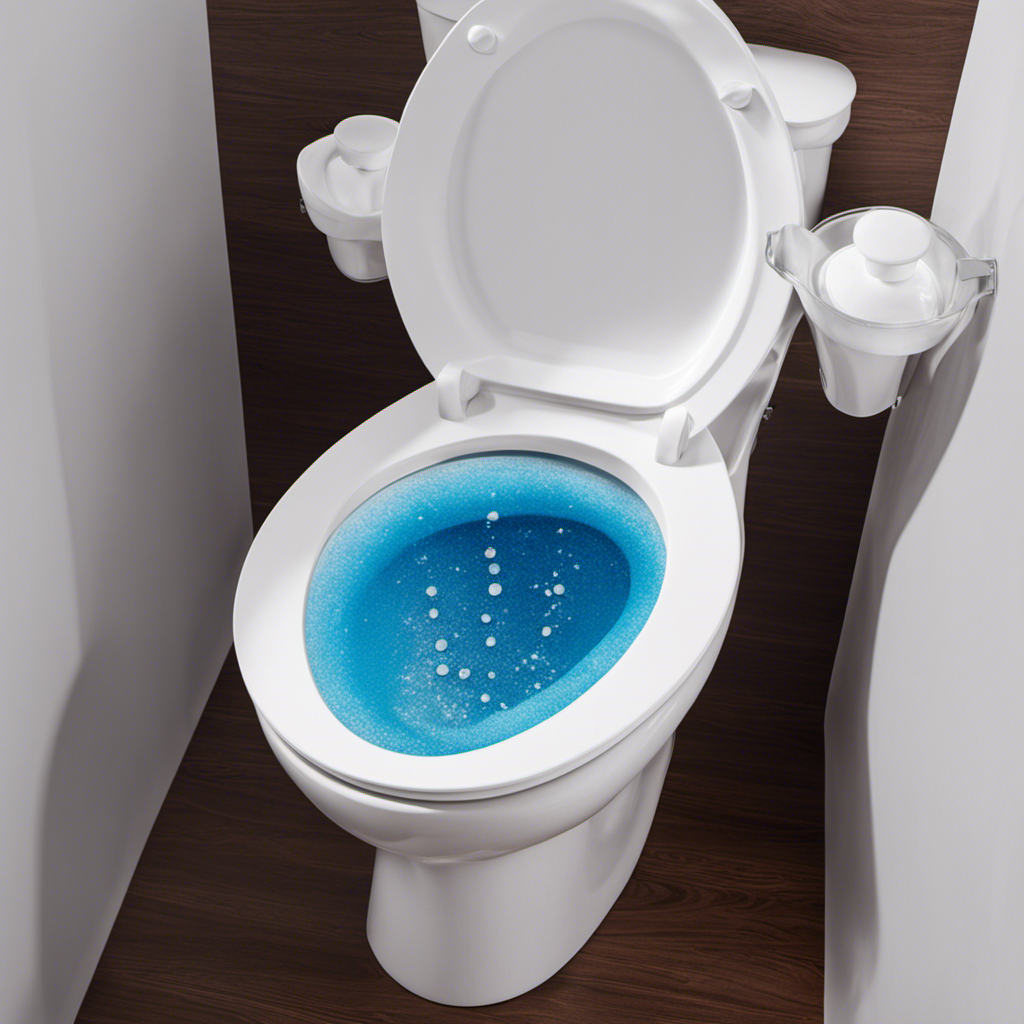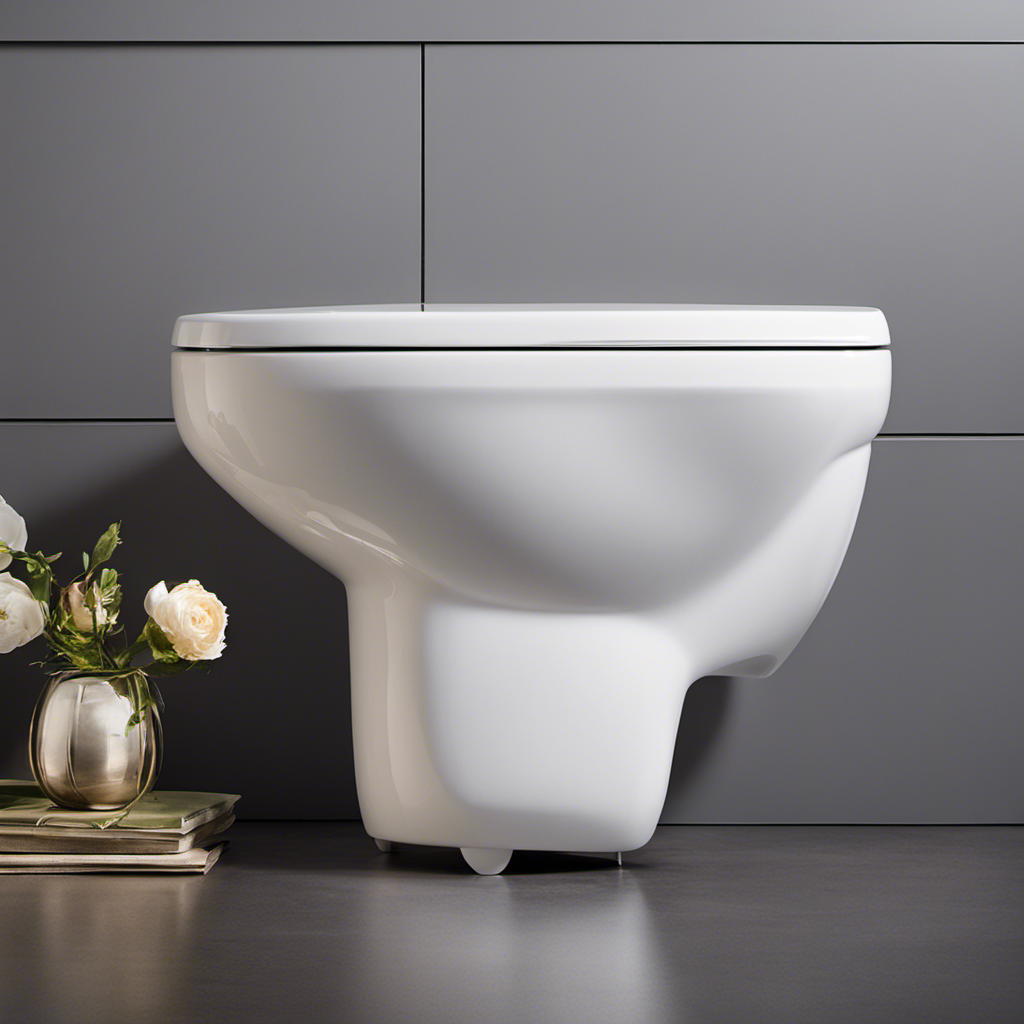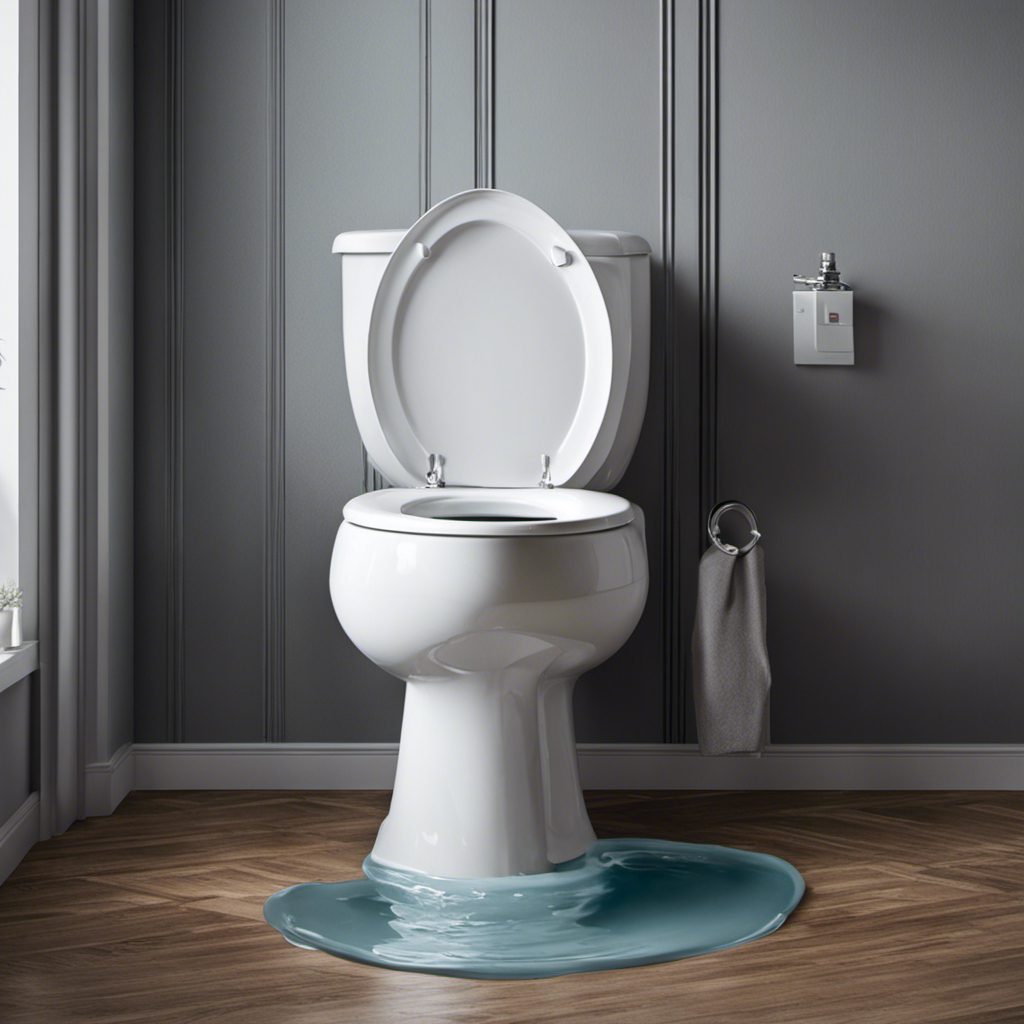Wondering if your flush valve is faulty? Fear not! In this article, we will walk you through the signs of a bad flush valve so you can master the art of toilet troubleshooting.
From strange flushing behavior to constant running water, we’ll cover it all. If weak or incomplete flushes, water leakage around the toilet base, or difficulty in flushing sound familiar, keep reading.
Get ready to become a flush valve expert and bid adieu to toilet woes!
Key Takeaways
- Signs of a bad flush valve include frequent toilet clogs, low water pressure during flushing, incomplete or weak flushes, and debris scattered around the toilet bowl after flushing.
- Indications of a bad flush valve also include water continuously flowing into the toilet bowl, a visible rise in water level in the bowl, small ripples on the surface of the water, and increased water wastage and water bill.
- Weak or incomplete flushes can be caused by a bad flush valve, toilet clogs, or low water pressure. Solutions include using a plunger or auger for clogs, checking the water supply line for low pressure, and adjusting the water level if necessary.
- Water leakage around the toilet base can be an indicator of a bad flush valve, especially if there are signs of moisture, water stains, or dampness on the floor and puddles or water pooling around the toilet base. Repairing the toilet base by replacing the wax ring is necessary in such cases.
Strange Flushing Behavior
We noticed peculiar flushing behavior in our toilet. It started to clog frequently, even with normal use. We realized that the water pressure seemed to be lower than usual, which was causing the toilet clogs.

We decided to investigate further. Upon inspection, we discovered that the flush valve was the culprit. The flush valve is responsible for regulating the water flow during a flush. When it’s functioning properly, it allows a swift and powerful flush.
However, when it becomes faulty, it can lead to weak or incomplete flushes, resulting in toilet clogs. This happens because the water pressure isn’t sufficient to effectively clear the waste.
Therefore, if you notice strange flushing behavior in your toilet, it’s important to check the flush valve for any issues to prevent further problems.
Constant Running Water
After noticing strange flushing behavior in our toilet, such as frequent clogs and low water pressure, we investigated further and discovered that the flush valve was the cause.

However, we also noticed another issue – constant running water. This is a common problem associated with a bad flush valve. When the flush valve is faulty, it fails to create a tight seal, allowing water to continuously flow into the toilet bowl. This not only leads to a waste of water but also affects the water pressure in your plumbing system.
Continuous water flow can significantly increase your water bill and put a strain on your household’s water supply. If you notice constant running water in your toilet, it’s essential to replace the flush valve promptly to prevent further water wastage and maintain proper water pressure in your plumbing system.
Weak or Incomplete Flush
One indication of a bad flush valve is experiencing a weak or incomplete flush. When you flush your toilet and notice that the water isn’t flowing with enough force or that the bowl doesn’t empty completely, it could be a sign that your flush valve is not functioning properly. This can be caused by various factors, including a toilet clog or low water pressure.
To help you understand this better, here is a table that highlights the common causes and possible solutions for a weak or incomplete flush:

| Causes | Solutions |
|---|---|
| Toilet clog | Use a plunger or auger |
| Low water pressure | Check water supply line |
| Adjust water level |
Understanding the cause of a weak or incomplete flush is crucial for resolving the issue. By addressing the underlying problem, you can ensure that your toilet operates efficiently and effectively.
Now, let’s move on to the next topic: water leakage around the toilet base.
Water Leakage Around the Toilet Base
To address water leakage around the toilet base, we need to check for any signs of moisture and take prompt action. Water leakage around the toilet base is a common issue that can lead to water damage and other problems if not addressed promptly.
The first step in toilet base maintenance is to inspect the area around the base for any signs of water. Look for water stains, puddles, or dampness on the floor. If you notice any of these signs, it’s important to act quickly to prevent further damage.

In some cases, the problem may be as simple as a loose or worn wax ring. In this case, toilet base repair can be done by replacing the wax ring. However, if the leakage persists or is accompanied by other issues, it’s recommended to consult a professional plumber for a thorough inspection and appropriate repairs.
Now, let’s move on to the next topic: difficulty in flushing the toilet.
Difficulty in Flushing the Toilet
When experiencing difficulty in flushing the toilet, we should start by checking the functionality of the flush valve. The flush valve is responsible for releasing the water from the tank into the bowl, creating the necessary force to remove waste and toilet paper. If the flush valve is bad, it can lead to toilet clogs and decreased water pressure, making it challenging to flush properly.
Here are a few things to consider when facing this issue:

- Check for any debris or obstructions in the flush valve.
- Inspect the flapper or seal to ensure it’s sealing properly.
- Verify that the chain connecting the flush lever to the flush valve is properly adjusted.
- Test the water pressure in your plumbing system to ensure it’s sufficient for proper flushing.
Frequently Asked Questions
How Much Does It Cost to Replace a Flush Valve?
When it comes to the cost of replacing a flush valve, it depends on whether you opt for professional installation or DIY. Professional installation can range from $150-$300, while DIY replacement can be as low as $20.
Can a Bad Flush Valve Cause a Clog in the Toilet?
A bad flush valve can lead to a clogged toilet. It’s crucial to perform regular flush valve maintenance to avoid this issue. Signs of a clogged toilet include slow draining and water backing up.
Are There Any Temporary Fixes for a Bad Flush Valve?
There are temporary repair options available for a bad flush valve. Signs of a failing flush valve include weak or incomplete flushing, water leaks, and constant water running in the toilet bowl.
Can a Bad Flush Valve Lead to Higher Water Bills?
Regular toilet maintenance is important to avoid higher water bills. Signs of a faulty flush valve include inconsistent flushing, water leaks, and a constantly running toilet. Prompt repairs can prevent unnecessary water usage and expenses.

How Long Does a Flush Valve Typically Last Before Needing to Be Replaced?
Flush valve lifespan can vary depending on usage and maintenance. Signs of a failing flush valve include inconsistent flushing, leaks, and difficulty in flushing. Regular inspection and timely replacement are crucial for optimal performance.
Conclusion
If you notice your toilet behaving strangely, such as constant running water or weak flushes, it may be a sign of a bad flush valve.
Additionally, if you spot water leakage around the toilet base or experience difficulty in flushing, it’s likely time to replace the flush valve.
By addressing these issues promptly, you can ensure your toilet functions properly and avoid any unpleasant surprises in the future.











